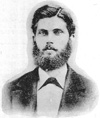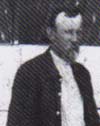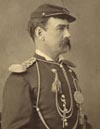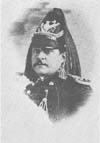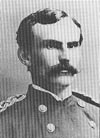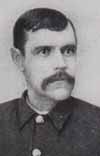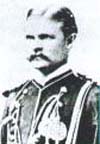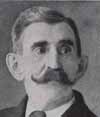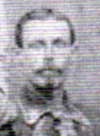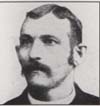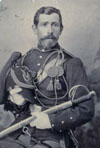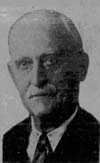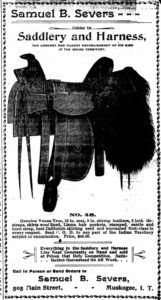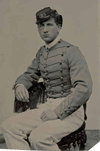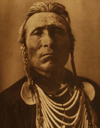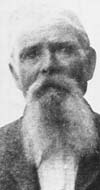Thomas James Finnegan was born on September 1, 1850, in Hillsboro, Ohio. He was a Private in Company M who was not present at the Battle of the Little Bighorn due to detached service.
Jacob Deihle died in Washington, D.C., on September 2, 1885, and was buried in the Soldiers’ Home National Cemetery there. He was a Sergeant with Company L who was with the pack train and participated in the hilltop fight.
James P. Boyle died on September 2, 1920, in Bismarck, North Dakota, and was buried there on September 4 in St. Mary’s Cemetery. He was a Private in Company G who participated in the valley and hilltop fights, where he was wounded.
Hugh N. Moore died on September 3, 1900, in Washington, D.C., and was buried in the Soldiers’ Home National Cemetery there. He was a Private in Company M who participated in the valley and hilltop fights.

Donald McIntosh (left) was born in Quebec, Canada, on September 4, 1838. He was the First Lieutenant in command of Company G during the Battle of the Little Bighorn and was killed during the valley fight.
Francis M. Reeves died on September 4, 1902, in Washington, D.C. He was a Private in Company A who was wounded twice in the retreat from the valley fight.
Charles Ackerman was born in Baden, Germany, on September 5, 1848. He was a Private in Company K who was not present at the battle due to detached service at the Powder River Depot.
Samuel B. Severs died on September 5, 1919, in El Dorado, Arkansas, and was buried in the Woodlawn Cemetery there. He was a Private in Company H who was wounded in the hilltop fight.
William M. Shields died at Fort Sill, Oklahoma, on September 6, 1887, and was buried in the Post Cemetery there. He was a Private in Company E who was wounded in the hilltop fight.
John A. Bailey married Margaret Katherine Johnson (1840-1919) on September 6, 1894. They had a daughter named Florence in St. Paul, Minnesota, in 1899. He was a Saddler with Company B who was with the pack train and in the hilltop fight.


